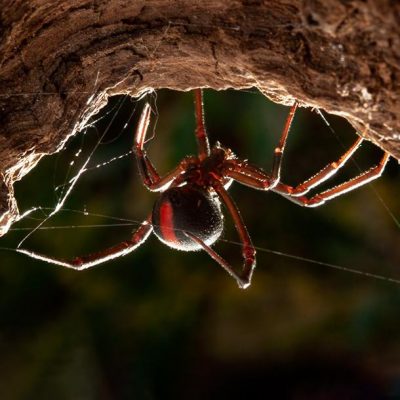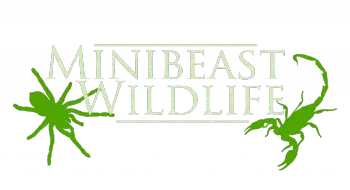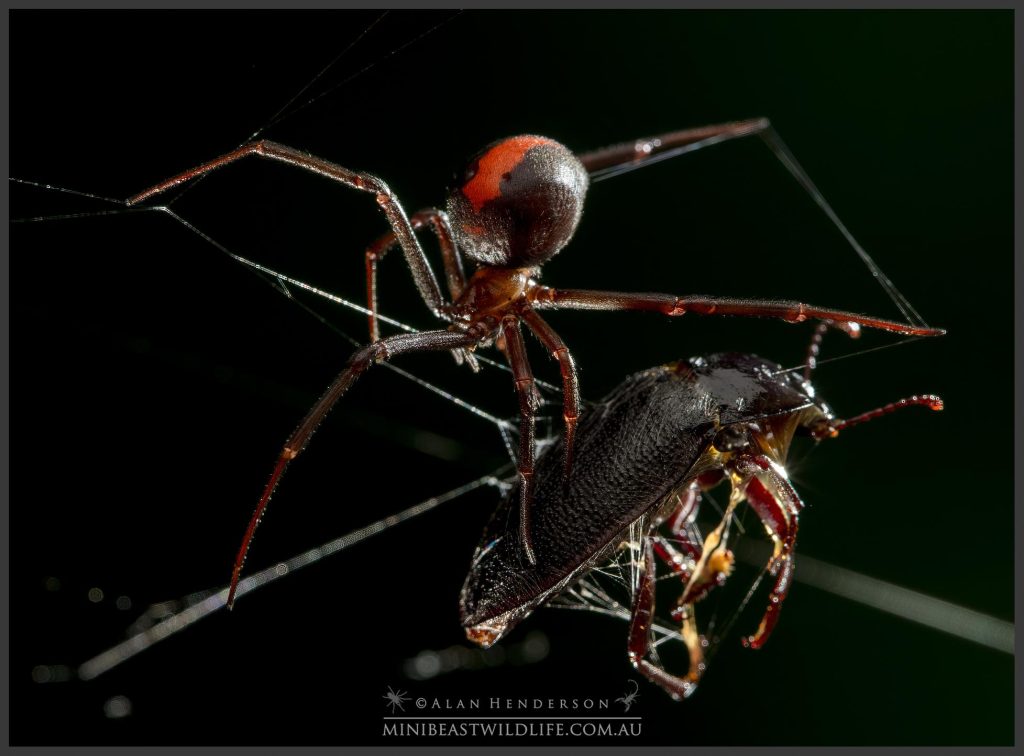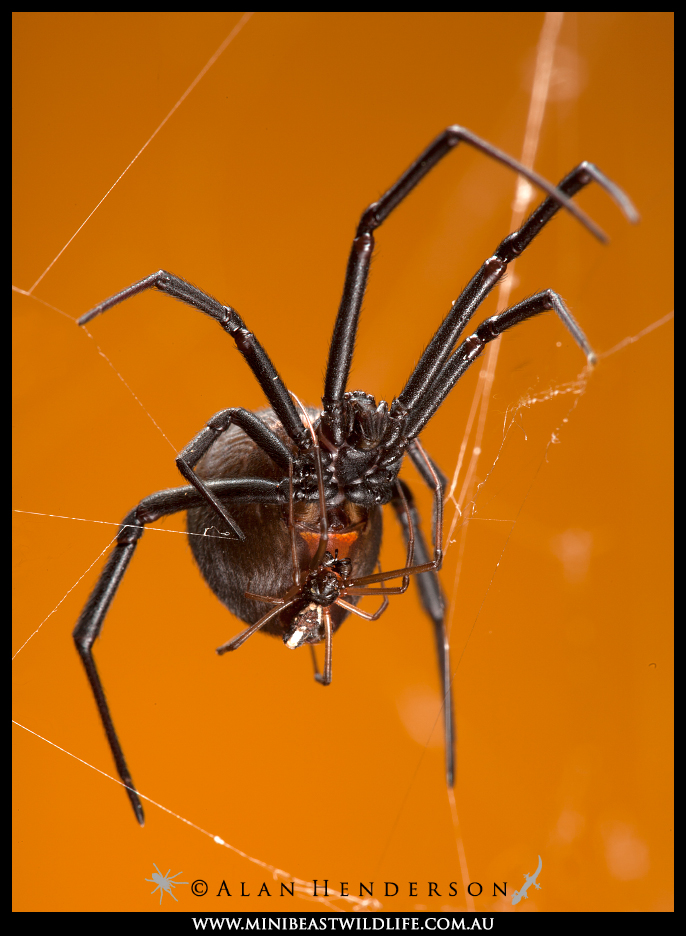AUSTRALIAN INVERTEBRATES
Redback Spider
There is probably no spider better known in Australia than the Redback. It lives Australia wide, is more common around us than in the bush, and is the subject of many myths, fables, and even has had a song penned in its honour



